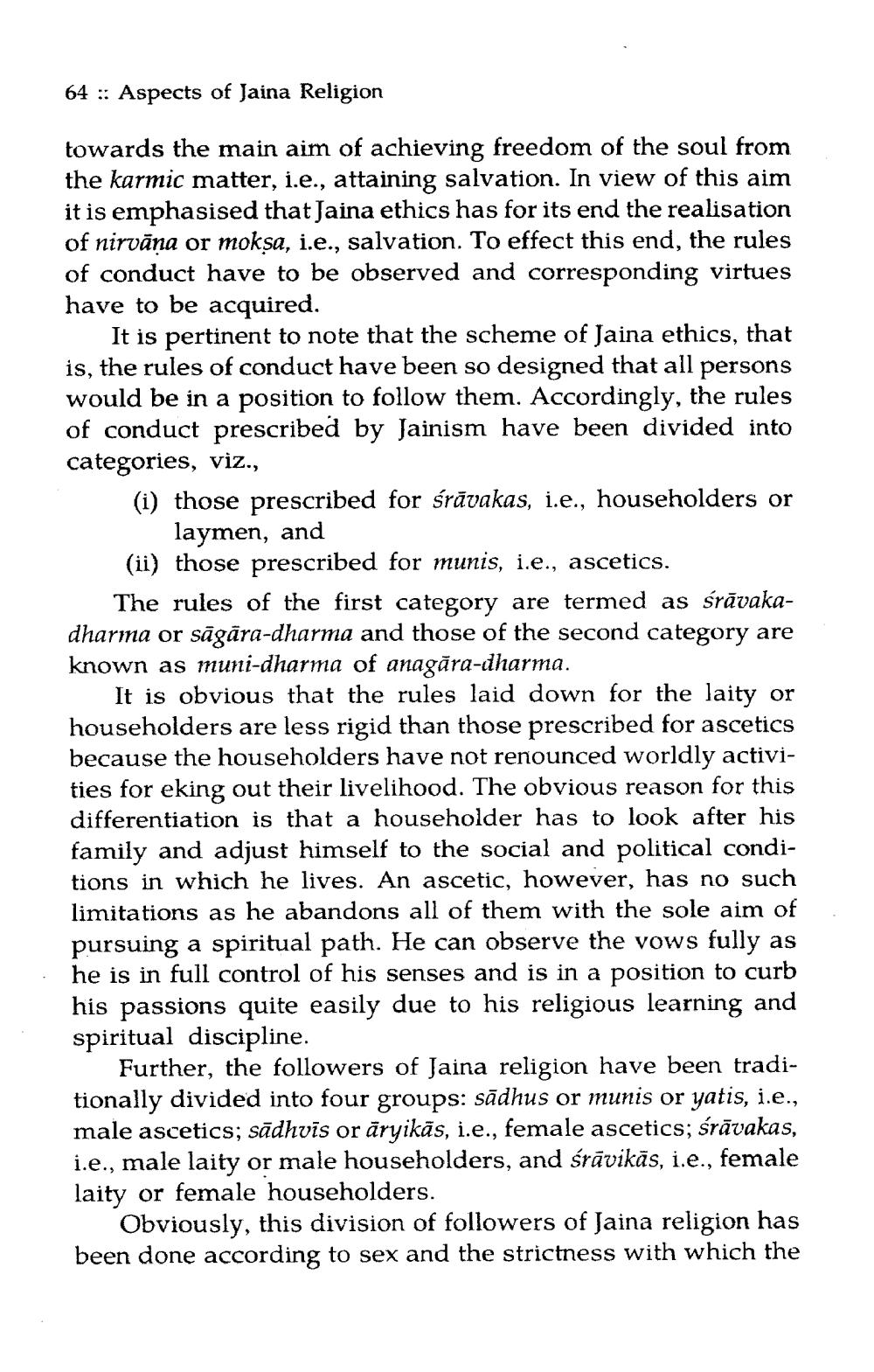________________
64 :: Aspects of Jaina Religion
towards the main aim of achieving freedom of the soul from the karmic matter, i.e., attaining salvation. In view of this aim it is emphasised that Jaina ethics has for its end the realisation of nirvana or moksa, i.e., salvation. To effect this end, the rules of conduct have to be observed and corresponding virtues have to be acquired.
It is pertinent to note that the scheme of Jaina ethics, that is, the rules of conduct have been so designed that all persons would be in a position to follow them. Accordingly, the rules of conduct prescribed by Jainism have been divided into categories, viz.,
(i) those prescribed for śrāvakas, i.e., householders or
laymen, and (ii) those prescribed for munis, i.e., ascetics.
The rules of the first category are termed as srāvakadharma or sāgāra-dharma and those of the second category are known as muni-dharma of anagăra-dharma.
It is obvious that the rules laid down for the laity or householders are less rigid than those prescribed for ascetics because the householders have not renounced worldly activities for eking out their livelihood. The obvious reason for this differentiation is that a householder has to look after his family and adjust himself to the social and political conditions in which he lives. An ascetic, however, has no such limitations as he abandons all of them with the sole aim of pursuing a spiritual path. He can observe the vows fully as he is in full control of his senses and is in a position to curb his passions quite easily due to his religious learning and spiritual discipline.
Further, the followers of Jaina religion have been traditionally divided into four groups: sādhus or munis or yatis, i.e., male ascetics; sādhvīs or āryikās, i.e., female ascetics; śrāvakas, i.e., male laity or male householders, and śrāvikās, i.e., female laity or female householders.
Obviously, this division of followers of Jaina religion has been done according to sex and the strictness with which the




